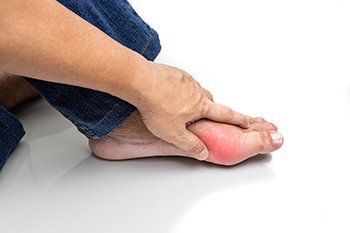
Foot problems are relatively common among those with diabetes. Over time, diabetes can cause neuropathy, a type of nerve damage. It can interfere with feeling in the feet and cause tingling and pain. With the loss of feeling in the feet, one can get a blister or sore on their foot that gets infected or does not heal properly and never know about it. Also, diabetes can lower the amount of blood flow to the feet, making it harder for sores or infections to heal. Unfortunately, improper healing in diabetics could lead to gangrene and limb loss. Management of blood glucose levels and daily foot care can help to prevent diabetic-related foot problems. Things you can do each day to care for your feet include washing, drying, and moisturizing them, examining your feet for any sores or abnormalities, and trimming toenails straight across. If you have diabetes, it is strongly suggested that you have a podiatrist on your healthcare team and receive regular examinations of your feet.
Diabetic foot care is important in preventing foot ailments such as ulcers. If you are suffering from diabetes or have any other concerns about your feet, contact one of our podiatrists from Associates in Podiatry. Our doctors can provide the care you need to keep you pain-free and on your feet.
Diabetic Foot Care
Diabetes affects millions of people every year. The condition can damage blood vessels in many parts of the body, especially the feet. Because of this, taking care of your feet is essential if you have diabetes, and having a podiatrist help monitor your foot health is highly recommended.
The Importance of Caring for Your Feet
- Routinely inspect your feet for bruises or sores.
- Wear socks that fit your feet comfortably.
- Wear comfortable shoes that provide adequate support.
Patients with diabetes should have their doctor monitor their blood levels, as blood sugar levels play such a huge role in diabetic care. Monitoring these levels on a regular basis is highly advised.
It is always best to inform your healthcare professional of any concerns you may have regarding your feet, especially for diabetic patients. Early treatment and routine foot examinations are keys to maintaining proper health, especially because severe complications can arise if proper treatment is not applied.
If you have any questions please feel free to contact our offices located in Pittsburgh-South Hills, and Pittsburgh-Bellevue, PA . We offer the newest diagnostic and treatment technologies for all your foot and ankle needs.









